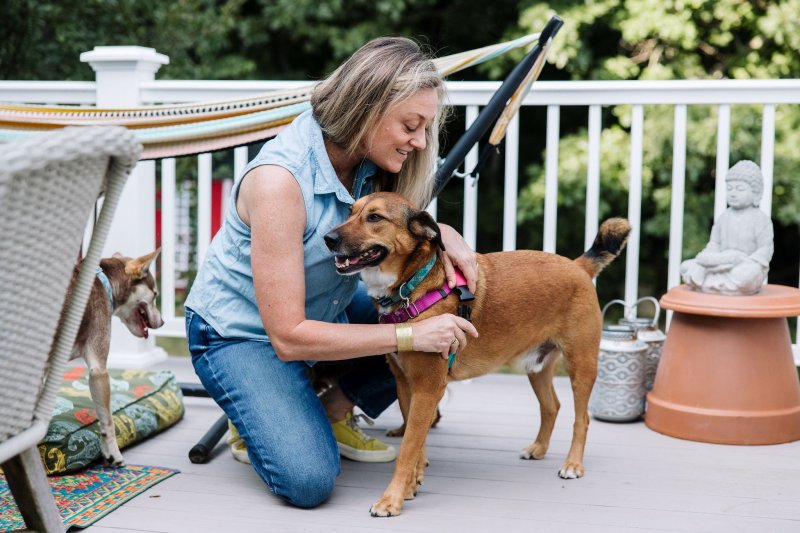Best Dog Training Methods – The logical approach should be to not use force, intimidation, hesitation and consequences tactics when interacting and working with animals, but the training industry is highly unregulated and there is a lot of conflicting information in a Google search which can leave a person feeling confused. Frustrated and helpless.
Walt Disney, movies, television, and books create false impressions of animal behavior and interactions. This entertainment does great harm to our dogs. Physical or verbal punishment has no place in the home or dog training school environment.
Best Dog Training Methods

Non-force dog training aims to promote science-based ethical principles through a sense of empathy and the ability to understand interactions and appropriate behavior with dogs in training situations and environments. This initiative is supported by many recognized training professionals and organizations around the world with extensive knowledge about dog behaviour, based on the latest scientific research.
Best Bird Dog Training Books In 2024
Nowadays, we know that dogs are sensitive mammals. Gregory Burns was one of the scientists who conducted a study [1] in which they concluded that dogs are able to experience a similar level of awareness, consciousness, and emotions that is comparable to humans. You can’t look at your dog and tell me he doesn’t feel anything. Of course they do, their feelings may not be as complex as our higher human feelings; However, they feel pain, fear, joy and uncertainty. This would help everyone to rethink the way we treat and interact with dogs.
The outdated methodology of using force and intimidation tactics stems from “dominance theory,” which states that people must gain social status and must be the leaders of the “group.” This often results in the trainer/owner using aversive tactics that may cause pain or stress in order to control the dog, teach him a lesson, and show him who’s boss. This is not only scientifically outdated [2], but it is also very dangerous to humans and dogs. Dogs that are interacted with and trained using these methods show greater fear, reactivity, and aggressive behavior [3] because the dog senses something unpleasant while interacting with the stimulus that causes fear or an arousal response that prompts the dog to stand up and become reactive and defensive.
Force involves psychological intimidation and the active application of something unpleasant that causes pain or psychological stress. Aversion is an unpleasant method used to suppress or stop unwanted behavior. Our responsibility as dog owners and trainers is to apply current knowledge and follow ethical principles to our canine companions. An empathic approach to dog training improves the environment for both the owner and increases the dog’s ability to learn and absorb information.
Many behavioral problems in dogs result from a lack of appropriate exposure, fear, and insecurity that cannot be resolved through punishment. Using punishment may only temporarily suppress the symptoms of the behavior so that it appears to work, but it does not address or solve the underlying problem. Behavior is an external reflection of internal emotional conflict. You may find that if you address the feelings, the behavior may resolve itself. Non-force training works to understand emotions and transform them into positive associations, using non-aversive training methods.
Best Training Methods For Labrador Puppies
If you use the aversive method to stop the unwanted behavior and then the dog stops doing what you don’t like, you may see your dog freeze in response to fear or enter a state of withdrawal (learned helplessness). This is then seen as a ‘good’ dog, which is incorrect and means the dog is avoiding survival. You can then get the opposite effect, where the dog becomes more fearful, and therefore becomes aggressive, as this is a survival defense mechanism. You are not addressing the actual problem the dog is facing, and this is definitely not the right way to address the problem because it ends up creating more negative associations for the dog.
Research should be done before using any training devices such as shock collars, prong collars, choke chains, or any other device. Numerous threats to an animal’s emotional and physical well-being have been documented [4].
Did it work or was it just suppressing the behavior? Dealing with behavior and suppressing it are two completely different things.

What happens if your dog’s behavior is the beginning of an illness such as hearing loss, vision damage, or pain problems? Have you ruled this out before resorting to methods that require tools or unpleasant stimuli to change behavior?
What’s Your Dog Training “vibe”?
Is it a dictatorship where you use intimidation and forceful tactics to force your dog to comply, or do you want the relationship to be built on understanding and trust?
Will your dog associate this behavior with physical punishment? A dog can make attachment to you dangerous and unpredictable.
The risk of using these training tools and methods is increased fear, avoidance and animal withdrawal/learned helplessness, increased reactivity and aggression and an unpredictable dog [5].
Finding a good dog trainer can be a difficult and confusing task since there are so many of them out there. So how do you know you are choosing the right option for your beloved dog?
Find The Best Trainer For You And Your Dog
The first thing you should ask the coach is: “What training methods does he use and what is his training philosophy?” How they answer this question will likely give you an idea of how they get along with dogs.
You want to avoid a coach who uses terms like pack leader, dominant, and alpha – no qualified coach would ever use such terms.
Why in 2023 do we still think it’s okay to use fear, intimidation, pain, and learning consequences? Today doctors don’t perform lobotomy surgeries to treat mental illness – we don’t hit children to make them listen to us – why? – Because science has evolved and we understand much more about the long-term consequences of these methods!

Positive reinforcement works and does not destroy the relationship between humans and dogs! It can only build trust.
Pitfalls Of Negative Reinforcement
The question you should ask yourself when training your dog is: “Does the fact that you can use effective methods that seem to stop unwanted behavior mean that you should?”
Such methods are controversial among many coaches. I can say that no qualified/certified trainer and/or behaviorist would recommend such outdated “training tools” and myths [6].
A good dog trainer is someone who understands dogs and realizes that they behave in a way that is natural and normal for their species.
Dog training is not a “one size fits all” approach. Every dog is different and reacts differently to its environment. Qualified trainers do not need to resort to aversive tools because they are competent enough and have sufficient knowledge and experience to train a dog without pain or intimidation.
Famous Dog Training Methods: Modern & Popular Types 2023
Don’t take my words seriously. Do your own research on whether you want your dog to feel safe doing something through reward-based training or doing something out of fear of consequences.
To the untrained eye, punishment appears effective, which is why people use it. Punishment has its limits and is characterized by quick and temporary return. The unwanted behavior may disappear, but at what cost to the dog?
1 Peter F. Cook, Ashley Prichard, Mark Spivak, Gregory S. Berns, Awake canine fMRI predicts dogs’ preference for praise versus food, Social and Affective Neuroscience, Volume 11, Issue 12, December 2016, Pages 1853–1862, https://doi .org/10.1093/scan/nsw102

2 John W. S. Bradshaw, Emily J. Blackwell, Rachel A. Casey, Dominance in Domestic Dogs – Good Habit or Bad Habit, (2009), http://www.thebehaviourclinic.co.uk/wp-content/uploads/ 2016/ 09/Bradshaw_2009-Dog-Dominance-Theory-Theory-Good -The Bad.pdf
Make An Informed Choice: Balanced Dog Training Vs. Positive Reinforcement
3 Megan E. Herron, Frances S. Schofer, Ilana R. Reisner, A Study of the Use and Outcomes of Confrontational and Nonconfrontational Training Methods in Client-Owned Dogs Exhibiting Undesirable Behaviors, Applied Animal Behavior Science, Volume 117, Issues 1-2, 2009, https://www.sciencedirect.com/science/article /abs/pii/S0168159108003717
4 Masson s, de la Vega S, 2018, Electronic training devices: a debate on the advantages and disadvantages of their use in dogs as a basis for the European Veterinary Association’s position on clinical ethics, Journal of Veterinary Behavior, Volume 25, May-June 2018, https://www.sciencedirect .com/science/article/abs/pii/S1558787818300108?via%3Dihub
5 French-Mitrevski K, 2018, Prong-and-choke collars, the good and the bad, Exotic Animal Behavior Center, http://www.animalanticsbehaviour.com/blog-1/2018/7/24/prong-and-choke -check – Collars are good And bad
6 British Small Animal Veterinary Association. (2012). Position statement on aversive training methods (e-collars and other aversive collars). Station No. 31.
Understanding Dog Training Techniques, Styles And Methods
Training a dog isn’t just about teaching him how to listen and “correct” unwanted behavior; It is about creating positive associations with the surroundings and the building
Dogs behave this way for several reasons. They don’t do things on purpose to be stubborn or “rude,” nor do they intend to do so
Our canine friends use a complex language for non-verbal communication called body language. Body language is the way a dog uses it. You are here: Home / Puppy training / The best dog training methods – choosing the right method to train a puppy

One of the biggest sources of confusion for many people when it comes to dog training is the style or method of training the dog
Get In Touch
Dog training methods, best methods for training a dog, best training methods, positive dog training methods, types of dog training methods, bad dog training methods, best training methods for employees, best puppy potty training methods, police dog training methods, best potty training methods, different dog training methods, best puppy training methods
- Essential Pet Accessories For Home - July 21, 2024
- Dog Behavior Correction Techniques - July 21, 2024
- Dog-friendly Family Activities - July 20, 2024




